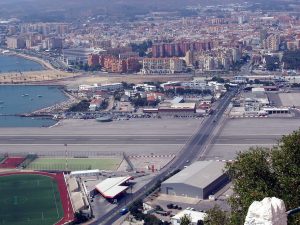
Born on July 15, 1906, Rudolf Uhlenhaut was an engineer and designer of Anglo-German descent, who later sat on the Board of Management at Daimler-Benz. He fathered designs for many vehicles, including the Silver Arrows, the 300 SL with the famous gullwing doors and the Mercedes-Benz 300 SLR. Some of the larger series also owe a debt to Uhlenhaut. Uhlenhaut, son of an English mother and German father, was born in London, where his father was the manager of a branch of Deutsche Bank. From there the family moved first to Brussels, later to Bremen. As a student he followed his passion for skiing and headed to Munich to study mechanical engineering. He joined Daimler-Benz in Stuttgart as a young engineer in 1931 and began his career there in the test department under Fritz Nallinger, where he experimented with carburettors and worked on developments such as the Mercedes-Benz 170 V.
In 1936 Uhlenhaut took over as head of the racing department. As its new technical director his brief was to put racing cars sporting the three-pointed star back on course for success – and that is precisely what he did. The young engineer spent many thousands of kilometres at the wheel, testing the racing cars himself in order to get a feel for their deficiencies. That the W 25 Silver Arrow once again became competitive was largely thanks to Uhlenhaut. After extensive revision, the W 125 Silver Arrow was the supreme car of the 1937 Grand Prix season, and Rudolf Caracciola was crowned European champion. This car was succeeded by the W 154 which dominated the 1938 and 1939 seasons.
With the outbreak of the Second World War, Mercedes-Benz did not develop another competitive sports car until the early 1950s. In April 1949 Uhlenhaut was appointed head of the passenger car test department. On June 15, 1951, the Daimler-Benz board took the decision to return to international racing. But with a change to Formula One regulations expected for the 1954 season, the company decided to wait until these had been announced.
In the meantime it developed a sports car that would revive the tradition of success built over the major international long-distance races of the 1930s. Taking as his starting point the production engine from the Mercedes-Benz 300, Uhlenhaut encased this in a tubular frame and aluminium body. The legendary 300 SL “Gullwing” was born – initially as a thoroughbred racing sports car (W 194).
Despite a string of race victories, the carmakers from Untertürkheim were not interested at first in bringing out a version of the car for public use. Then one day a businessman by the name of Maximilian (“Maxi”) Hoffman got in touch from the USA. His plan was to import 1,000 road versions of the car and he managed to convince the Board of Management of the efficacy of his idea. Eventually a road version of the 300 SL (W 198) and the smaller open-topped 190 SL (W 121) were unveiled to the motoring world at the International Motor Sports Show in New York. From that moment, crowned heads and celebrities alike clamoured for a chance to be seen in the new sports car.
It was equipped with the first four-stroke engine to feature direct petrol injection, a unit that delivered 215 hp (158 kW). Another of the car’s innovative features was its space frame. For reasons of stability the frame of the coupé had to be raised down either side of the car, making the use of conventional doors impossible. This gave Uhlenhaut the idea of “gullwing” doors.
In parallel to passenger car development, Uhlenhaut also designed the new W 196 Formula One car, the Silver Arrow for the post-war period. Uhlenhaut never managed more than to drive the car under test conditions – he was debarred from entering races because the Board of Management was unwilling to risk losing one of its most able members. However, his official car will live long in the memory, the legendary Uhlenhaut Coupé, which thanks to its thoroughbred racing technology gave a top speed of 290 km/h and made it the fastest car of its day authorized for road use.
Uhlenhaut was always thinking of improvements for his racing cars, and he was not averse to rolling up his sleeves at dusty rallies and taking a spanner to the cars himself. Cases involving his drivers are many and well-documented. In 1955 after a test session on the Nürburgring, for example, world champion driver Juan Manuel Fangio reported that the car was not quite set up as it should be. So after a substantial lunch Uhlenhaut climbed into the car, dressed in suit and tie, and lapped the Ring three seconds faster than the world champion. When Uhlenhaut pulled up alongside Fangio he told him it was nothing a little practice wouldn’t put right.
When Daimler-Benz withdrew from Grand Prix racing in 1955, Uhlenhaut focused his attention as Chief Engineer in Passenger Car Development exclusively on production models. He was jointly responsible for all model series of the day up to and including the S-Class of 1972 (W 116). He also had a major influence on another eye-catching design from Sindelfingen, the 230 SL – christened by car fans the Pagoda on account of its spectacular roof design.
During his lifetime Rudolf Uhlenhaut never owned a car of his own. In old age he needed a hearing aid, something he attributed to a lifetime driving and testing his racing cars. He took retirement in 1972. Rudolf Uhlenhaut died in Stuttgart on May 8, 1989, at the age of 82 years.
Source: DaimlerMedia
Source Photo history SL | Source Photo history Rudolf SL






